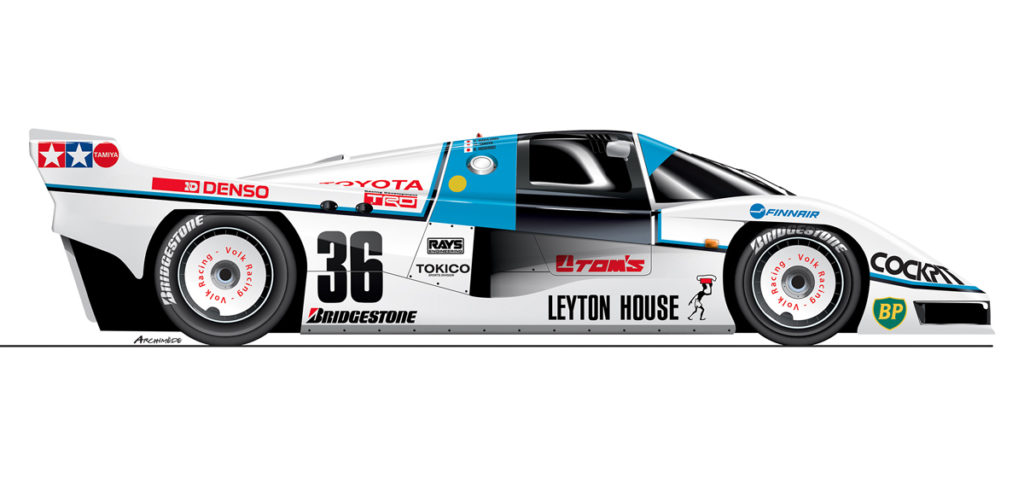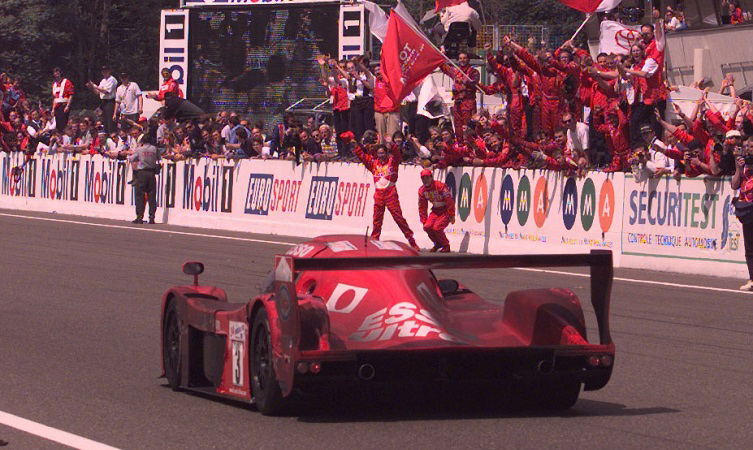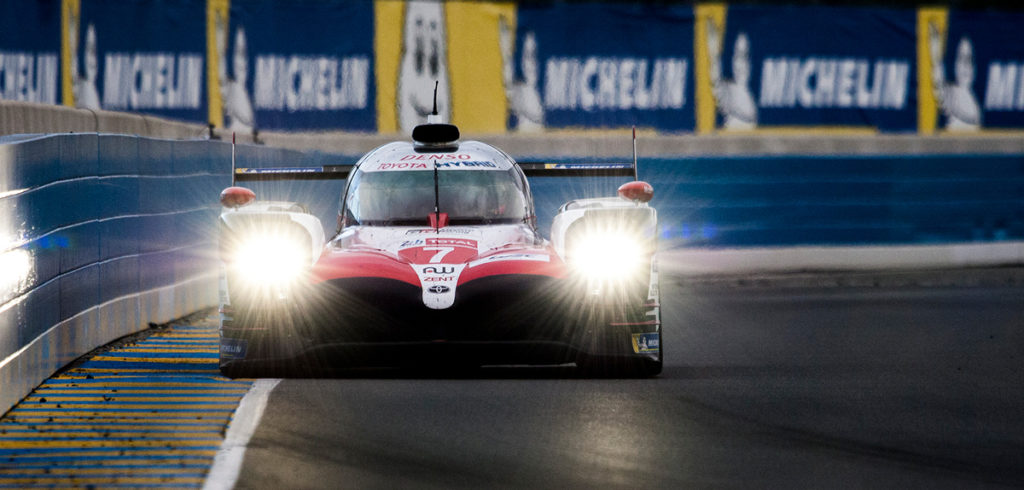This week was supposed to mark the swansong of Toyota’s TS050 Le Mans car, before it was replaced by the company’s new Hypercar for the 2020-21 WEC season. However, thanks to Covid-19, the only racing this weekend is virtual, and Toyota’s two-time winner will have to wait until September to make its bow.
Though Toyota has dominated endurance racing in the past two years, it took the manufacturer over 30 years to claim its maiden victory at Le Mans, with multiple potential wins slipping through its hands. Until 2018, Mazda remained the only Japanese marque to triumph at La Sarthe; though not for lack of trying by either Toyota or Nissan.
Toyota first arrived at the French classic with the 85C, built by Dome and fitted with a 2.4 liter, turbocharged I4, based on the unit found in the Celica road car. The car had an aluminum monocoque and had a full ground-effect body. Both Dome and TOM’s (Tachi Oiwa Motor Sport) entered 85Cs in the 1985 24 Hour, with the highest placed TOM’s car (#36) finishing in 12th place. The design was evolved for the next few years, culminating in the 88C for the 1988 season, but a top step on the podium eluded Toyota.
Toward the end of the Group C era, Toyota enlisted the help of Tony Southgate, responsible for Jaguar’s Le Mans winners, to pen the first of the TS lineage of cars, the TS010. Toyota was relatively late to the party in utilizing rules that allowed 3.5-liter, V10, Formula 1-type engines to be used, but the 010 rectified this, with the 600bhp RV10.
The car had a full carbon-fiber monocoque and was a cutting-edge machine. Setting something of a pattern, victory would narrowly elude Toyota, which took second place at le Mans in 1992. It missed out again in 1993, but the TS010 certainly had the pace, setting lap records in both years.
Following the demise of Group C, Toyota supported a number of private entries until 1998, when it launched the TS020 (commonly called the Toyota GT-One), which took full advantage of the GT1 rules that no longer required 25 road versions to be built. The car had a carbon tub, with a fully stressed, twin-turbocharged 5.6-liter V8.

Again though, chances of victory slipped away. In 1998, the car qualified in second place, but had to retire. Then, in 1999, Toyota locked out of the front row of the grid, only for two cars to suffer accidents and the third coming home runner-up to BMW.
It would be 13 years until Toyota returned to endurance racing. In 2012, bailing the ACO out of a hole following Peugeot’s decision to quit the WEC, it accelerated development of its TS030 LMP1, which was due to debut in 2013.
Toyota took a unique approach to the LMP1 hybrid regulations, running a naturally aspirated V8 coupled to a super capacitor-based energy-recovery system, which it deemed to have better power density than available battery solutions. The car was supposed to be four-wheel-drive, but there was insufficient time to develop the front mounted MGU system, so was run as a RWD for 2012, meaning, as the tub was set up with all of the necessary reinforcement for a front MGU, it carried a weight penalty through the year.
The 030 set the trend for the next few years. Toyota’s cars were nearly always blisteringly fast, but bad luck or reliability issues plagued them. Neither car finished in 2012, but in 2013, they secured second and fourth places.
The 040 superseded the 030 in 2014. It was an evolution of the same basic design, now featuring a full four-wheel drive energy-recovery system, still based on capacitors, and secured the team third place behind Audi. But, in 2015, they were soundly out paced by returning Porsche. Toyota had to react and development of the car’s successor, the 050 was accelerated.

Initially, the team had planned to introduce a new, twin-turbo V6 engine and battery-based hybrid over the course of two years. The NA V8 of the 040 was a masterpiece, and astoundingly efficient, peaking at over 40% thermal efficiency and running a compression ratio of 17:1, but it could not compete with ever reducing fuel flow regulations.
Toyota wanted to stick with this engine for another year, adding a battery-based energy recovery system – having decided that battery technology had reached sufficient maturity to replace its capacitors – but the stark reality of Porsche’s pace in 2015 changed this. As a result, the 050’s chassis was far from optimized for the new engine, which was clear in areas such as the packaging of the cooling system, but it was fast, really fast.
Then heartbreak. Toyota dominated the 2016 race, but on the penultimate lap, a failure of a boost pipe on the leading car of Kazuki Nakajima saw it grind to a halt on the start-finish straight. Frustratingly, as admitted by John Litjens, project leader on the Le Mans project, the engine could have still run, but its failsafe systems, sensing a boost pressure loss, prevented it.
The following year would be similarly disappointing. Reliability issues meant Toyota could only manage ninth. As a consolation prize, Kamui Kobayashi obliterated the Le Mans lap record in qualifying, posting a time of 3m 14.791 seconds. In private, Toyota engineers mooted that there was probably more to come from the car if needed.
Then finally, in 2018, the TS050 won. Despite protestations from some that it was a hollow victory, as neither Porsche nor Audi were racing, it was thoroughly deserved. Toyota had stuck with its project and reaped the reward, and that perseverance looks to continue as it is the only manufacturer fully committed to a Hypercar entry.



